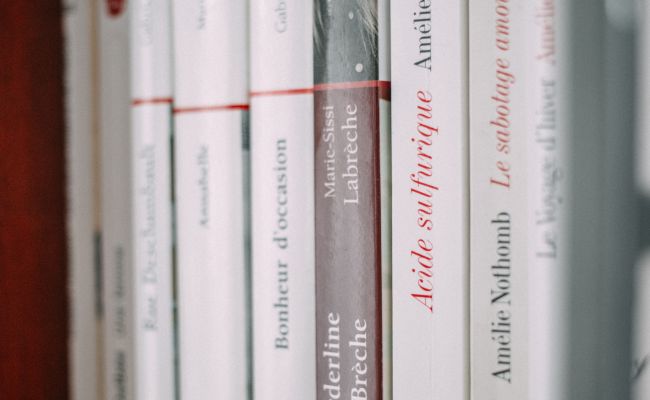What we do?
In principle, copyright protection does not require registration; works are protected simply by their creation. However, it is required that the work be fixed in a tangible medium.
Copyright law allows protection of a broad spectrum of works, including those developed within the framework of new technologies. Despite the absence of a registration requirement as a condition of protection, an entry in the intellectual property Register is advisable because it provides qualified proof of the registered rights, facilitating the defence of those rights if problems arise. Copyright is divided into two rights: economic rights on the one hand (transferable) and moral rights (non-transferable).

What types of work are protected?
- Literary Works: Literary works are protected through copyright.
Includes: Novels, poems, plays, reference documents, newspapers and computer programs; databases; films, musical compositions and choreographies.
The rights that its protection provides to the original creators and their heirs, suppose the exclusive right to use or authorize third parties to use the work in accordance with mutually agreed terms. The creator of a work may prohibit or authorize its reproduction; its public performance or interpretation; recordings of it; broadcasting and translation or adaptation.
The creators can sell or assign the exploitation rights to third parties in exchange for a payment. These payments are often contingent on the actual use of the work, in which case they are called royalties, the maximum term of which is 50 years after the death of the creator.
This period allows both creators and their heirs to profit financially from the work for a reasonable period of time. The protection of copyright also includes moral rights, which include the right to claim authorship of a work and the right to oppose modifications that may harm the reputation of the creator, which are rights - Artistic Works: As literary works are protected through copyright, by the mere fact of their creation.
Includes: Paintings, drawings, photographs and sculpture; architectural works; advertising, maps and technical drawings. They have the same protections for their original creators and their heirs, they assume the exclusive right to use or authorize third parties to use the work in accordance with mutually agreed terms. The creator of a work may prohibit or authorize its reproduction; its public performance or interpretation; recordings of it; broadcasting and translation or adaptation. The creators can sell or assign the exploitation rights to third parties in exchange for a payment. These payments are often contingent on the actual use of the work, in which case they are called royalties, the maximum term of which is 50 years after the death of the creator. This period allows both creators and their heirs to profit financially from the work for a reasonable period of time. The protction of copyright also includes moral rights, which include the right to claim authorship of a work and the right to oppose modifications that may harm the reputation of the creator. - Scientific Works: The scientific work is subject to protection as an object of copyright, but not because of its scientific, technical or practical content, but because it has an original form of exhibition.
Scientific creations are not the object of intellectual property, by reason of their content, ideas, procedures, systems, operating methods, concepts, principles, discoveries ..., nor of the training or experience of those who carry them out, promote them or the efforts of those who finance them, but only because of the literary or artistic form of their expression. - Photographic Works: Photographic works and those expressed by a procedure analogous to photography.
Derivative works: translations and adaptations, revisions, updates and annotations, compendia, summaries and extracts, musical arrangements, any transformations of a literary, artistic or scientific work - The Collections: The collections of other people's works, such as anthologies, and those of other elements or data that by the selection or disposition of the materials constitute intellectual creations are the object of intellectual property, without prejudice, where appropriate, to the rights of the authors of original works.
- Related rights. the rights of artists, performers, producers of phonograms and broadcasting organizations, in relation to their performances, phonograms and broadcasting emissions, respectively.
- The databases
- Computer programs Computer programs are protected through the Intellectual Property Law, it is acquired by the simple fact of creation, without any type of registration or registration being necessary for the birth of the right, although it is always convenient communicate to third parties that the exploitation rights of the program, putting, at the beginning of the program (on the first screen when it starts), and also in the manuals (on one of its first pages), as well as in the flow charts (schematic representation of the execution sequences of a process) the known symbol C circled ©, indicating place and year of disclosure. It is also interesting to reinforce protection through other means:
- Physical type: those consisting of the forced use of a mechanism (disk, key, etc.), outside the program to be executed.Physical type: those consisting of the forced use of a mechanism (disk, key, etc.), outside the program to be executed.
- Registration, consisting of pre-constituting a proof of authorship of the program, in order to be able to use it in the event that someone is exploiting the program without the legitimate consent of the owner of the rights, through various procedures:
- Registration in a public document with a Notary, by which the Notary attests that a program has been presented on a specific date, and the content of which is entered in a sealed envelope, to be used as evidence in case of litigation.
- Registration in the General Registry of Intellectual Property, as provided in the Intellectual Property Law, and where we will present the entire program in source code. However, a computer program that is closely related to a process or product capable of being patented and that does not work without that specific computer program, it can be patented
Rights
Rights conferred by copyright
Moral rights:
They are strictly personal and non-transferable.
- The right to disclose work under the author’s name, pseudonym or anonymously and the right to be recognized as the author of the work.
- The right to the integrity of the work.
- The right to modification of the work.
- The right to dissemination and non-dissemination of the work, how it is disseminated.
- The right to withdraw involves removing the works from circulation due to moral, scientific, ideological or aesthetic changes. However, this is consistent with paying compensation to those who have the rights of exploitation of the work at the time.
Exploitation rights:
Of a proprietary nature and grant sole and exclusive power for the exploitation of the work:
- Reproduction
- Distribution within a determined territory
- Public communication
- Transformation of the work
- Faculty of obtaining economic benefit (canon for private copying and resale rights).
Protection
- Condition of protection
As mentioned, there is no registration requirement for copyright protection but it is necessary to set the work in a tangible medium (ideas are not protected). Originality: means to protect an author’s intellectual creation. Protection of the intellectual creation throughout the life of the author and for a period of time after his death that varies by country (seventy years in Spain). The authorship is granted only to an individual, unless there are special arrangements provided for by law. Third parties can nevertheless acquire ownership of the exploitation rights. Spanish law has a specific regime for the salaried author.
- Scope of protection
National
Revised text of the Intellectual Property Law, approved by Royal Legislative Decree 1/1996 of 12 April (BOE of 24 April).Community
At the community level there are several directives regulating the protection of certain aspects of copyright.International
Through the Berne Convention for the Protection of Literary and Artistic Works Act, Paris, July 24, 1971; the Rome Convention on the Protection of Performers, Producers of Phonograms and Broadcasting Organizations (1961); and OMPI treaties on copyright and performances and phonograms, adopted by more than 100 countries. The TRIPS Agreement (1995).


WHAT WE DO
ABOUT US
CLIENTS:




